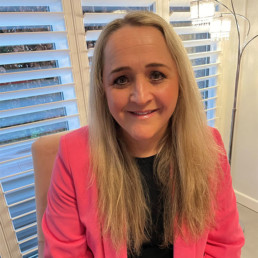Maximising Connection During Maternity Leave

Written by Liz Cartledge
Senior Vice Principal at a large Secondary School in Sheffield. Leader of Inclusion, Behaviour and Designated Safeguarding Lead. Liz is the mother to twin girls and returned from maternity leave in September 2020.
As a leader, the constant care of students and staff is arguably the most important and biggest responsibility in the long list of daily tasks. Getting the balance right and knowing what to do in each unique case can be hard.
It is true that we learn through our mistakes, however, sometimes it is helpful to be able to reach for some real-life guidance. Sometimes the hardest of experiences can make us the strongest. I personally experienced a lonely and isolating maternity leave due to the COVID-19 pandemic and lockdown in 2020 and thus feel I can offer some useful insights and support to schools who want to ensure their staff on maternity leave are cared for.
Since returning to work, I have often been asked to support other newly pregnant staff and on occasion those off with long-term absence. I feel empowered to help staff and one key reason I cite for this is because I feel confident sharing my own personal struggles and vulnerabilities, which I encountered on the journey to motherhood. Through Nourished Collective who featured a series called Mother, Sister, Daughter, Woman (Copy of This is How We Look (mcusercontent.com)), I shared my story which has helped me to break the silence that can exist around this issue. This has helped me personally and professionally to become a stronger leader.
The key is to build a school where staff feel valued, heard, and listened to. Sharing my story has given me the drive to know I can provide others with the space and empathy they need. It doesn’t matter what the issue is, if we, as leaders, are open about our emotions it can mean we are relatable to others; so I urge you to be vulnerable and see the benefits from it.
Recently, I have been considering the support we provide our staff with whilst on maternity leave. During my maternity leave I experienced reduced support, no baby groups and limited access to a GP. Maternity leave can be incredibly lonely and isolating. Connection is therefore key, and schools can provide this.
Within any school there is an abundance of knowledge and talent. Schools can offer emotional sanctuary and security. New parents/carers should be encouraged to share photos and updates regularly with a key member of staff. Furthermore, if you have a few members of the team off at once, could a group (perhaps via WhatsApp or equivalent) be set-up pulling all together?
I am often asked to be the key person identified to talk to new or soon to be new parents/carers. Currently, I am in regular contact with new Mums on maternity leave to provide them with a close connection with school. This helps us keep in touch and is a lifeline on some days for those Mums. I know this having cared for twin babies during a pandemic!
Do you offer this 1:1 support for those on maternity leave? Do staff have the chance to have 1:1 chats with a named ‘go to’ person on SLT? Could this help morale and well-being at your school if you make these subtle changes?
What kind and frequency of contact do you have with those on maternity leave? They are, after all, still employed by the school doing what is arguably the most important job of their lives. We owe it to them.
Remember, as leaders we can make a huge difference. Simple acts of kindness go a long way, sending cards or flowers can help bridge the gap that can grow when on leave. Creating a sense of family first is vital for staff retention.
Occasionally, without bridging this gap, we can risk staff being anxious to return or not returning at all.
Another key step to helping staff on maternity leave is to give them knowledge. By making them aware of the policy, for example what KIT (Keeping in Touch) days is a great start. It should not just exist in a policy given to staff to read. This could become part of pre-recorded videos shared with staff or information passed on in a 1:1 meeting before they leave. The impact of doing this is that it helps staff to be empowered and feel supported at this important time.
When staff do return, make sure they have the chance to meet a key person they feel comfortable with and that well-being chats are regularly put in. A review meeting 6 months or sooner after returning is a must to help the member of staff feel supported and to be able to reflect on how they are coping with work alongside parenthood.
Remember, it takes time for the member of staff to adjust to work. Schools move at a fast pace, and we must be patient. Small steps are acceptable. Don’t be too hard on yourself if you are returning and don’t expect too much if you have someone returning, at first- be flexible! Personally, it took me 12+ months to be myself again at work. Letting staff know this is great for their self-confidence and self-esteem which can be very low with sleep deprivation!
Celebrating the return of staff from maternity leave is important to share with all staff in briefings, in newsletters with parents/carers and with governors. It helps everyone see the member of staff returning as a new person which I feel is supportive and celebratory of their achievement/s!
The more we share, the greater the understanding will be for all and the greater the potential for empathy can begin.
The Need for Equity in Education for Those Trying to Conceive

Written by Caroline Biddle
Consultant, fertility coach and fertility advocate. Founder of Fertility Issues in Teaching.
The journey to parenthood isn’t always straightforward, with assisted conception being a route for many couples and individuals.
1 in 6 people in the UK are infertile, and in the last 10 years there has been an increase in women in same sex relationships looking to assisted conception for support to grow their families, as well a significant rise in those deciding to head down the route of fertility treatment to become a solo parent.
Female employees need time out of work to access fertility treatment
Male infertility accounts for 50% of infertility, nevertheless it’s women who require the time out of work to attend clinic appointments for scans and surgery.
The Teachers’ Fertility Treatment Survey is the first ever survey of its kind, gathering data from female teachers (including those who have left education) that have accessed assisted conception in the past 10 years. Data collected from the survey will provide an accurate insight of what is happening in schools in England and Wales as we unearth:
- How career progression of these women has been affected
- The percentage of schools that have fertility policies in place
- The impact of the support and the lack of support on female staff accessing assisted conception
- The wellbeing of staff members receiving fertility treatment
Employees can be surprised to learn that assisted conception in most school HR policies is referred to as ‘elective treatment’, meaning they find themselves compared with someone who wishes to have a breast enhancement during term time.
Categorising fertility treatment as elective is outdated.
The word ‘elective’ implies that fertility treatment is a lifestyle choice. This is discriminative terminology towards those with the disease of infertility and also to those in same sex relationships and who need assisted conception to have a biological child, or women who require treatment to become a solo parent for reasons such as having no partner, or having recently come out of a long term relationship.
Why we need assisted conception policies in the workplace
We need assisted conception policies in every workplace. In schools this policy will ensure that all teachers who are trying to conceive, no matter what their circumstance, are included, protected and supported.
Thousands of teachers are leaving the teaching profession every year, due to burn out or a change in personal circumstance. Some of these teachers leave education due to a dip in ambition following a lack of support following fertility treatment.
How to make policy inclusive and equitable for all employees
When writing your fertility workplace policy consider the following to avoid discrimination:
- Use non-gender specific language
- Allow partners (or those supporting someone who has no partner) to attend all fertility appointments.
- Be cautious not to discriminate against relationship status
- Be mindful of the sexual orientation of colleagues when writing a workplace fertility policy
- Be inclusive of the ages of those opting into assisted conception
- Avoid putting a limit on time off per cycle, everyone will need a different amount of time dependent on their personal circumstances—no two fertility journeys are the same
Life beyond the policy
A workplace fertility policy is a great starting point for schools wishing to be supportive of their staff who’re trying to conceive. There is however still work to be done from here.
To find out about the work Fertility Issues in Teaching offer, you can get in touch through the website, where you’ll also find helpful blog posts and information around free upcoming webinars.
Supporting pupils with ADHD in schools

Written by Nadia Hewstone
Nadia is a certified executive school leadership coach. She left headship to start Destino Coaching and now supports school leaders with their own development as well as development of their teams.
Even as a parent of a child with ADHD, as a teacher I struggled to find and implement strategies to support my students with the diagnosis. I found many things that ‘worked’, but many more that didn’t. The search continued when I became a Headteacher who was supporting colleagues who also struggled to find the answer. Where things changed was when I stopped looking for what worked and started understanding what I was happening for those students.
In his book Shattered Minds, Gabor Mate identifies a number of strategies, that spoke to me and that I wished I’d discovered sooner in my career. He makes a case for reducing ‘imposed structure and discipline’ and increasing ‘freedom for individuality and self-expression.’
I was relieved he didn’t go on to advocate unstructured classrooms, as I know that would be nearly impossible, in the current climate. Instead, he talks about recognising the ‘supressed energy’ of students with ADHD through our responses to them, which so often includes sarcasm, shaming and shouting.
This principle is the first to master in our endeavour to support these creative and courageous young people. The secret to success in this matter, for teachers, lies in not adding to the problem by alienating these student any further.
I saw the impact of this in my own school when the teaching staff and I made a pact to refrain from any type of shaming response to a child’s behaviour. We did some work as a team to recognise our triggers and manage our reactions to be able to keep to the pact. Behaviour in this group of students improved dramatically.
This came back to bite me again, when my own child’s behaviour invoked explosive responses in me. I was at my wits end. Then I realised I was angry with my child for having the struggles associated with having ADHD. With lots of support from family, I learnt to change the way I responded to her and I worked on accepting her exactly the way she was. Our lives and our relationship improved remarkably.
Unconditional positive regard doesn’t have to come just from parents, we can adopt it as teachers too. It require honestly, courage and a safe environment, but it is possible. Gabor argues that ‘understanding the student is transformative’ and I have seen this first hand, as a teacher and as a parent. There are other considerations such as working with parents, tailored access arrangements in exams and planning for the need to move and play but the commitment to stop trying to fix children with ADHD is the power pill we all need to take.
So when I work with people who want to provide better support for young people with ADHD, I start with pressing the stop button on wishing they were different and start work on meeting them where they are. All the other work is easy after that.

